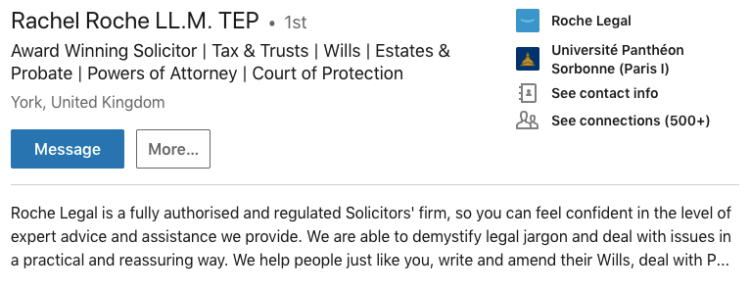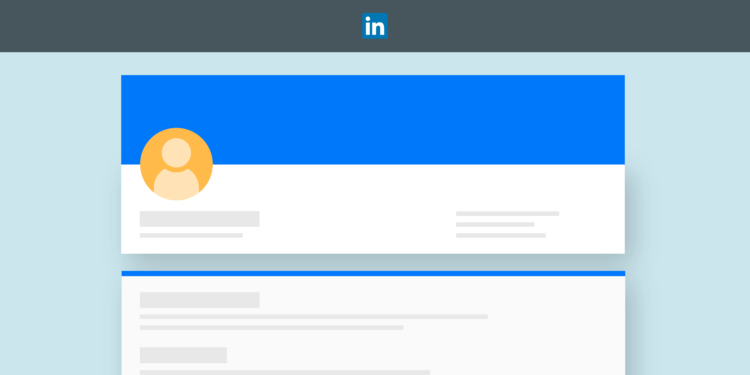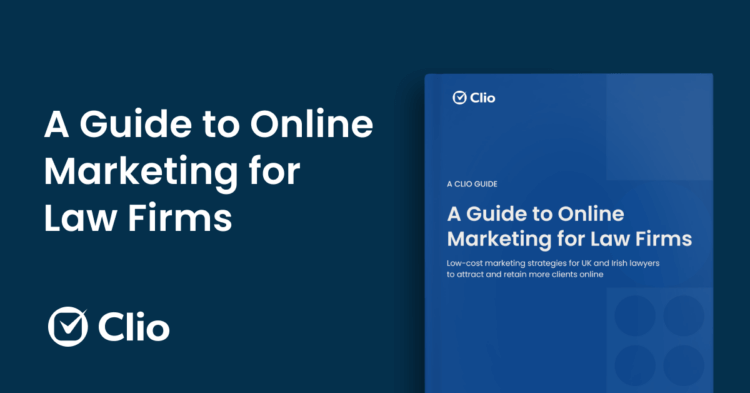Can I find you on LinkedIn?
In today’s social-focused world, a strong LinkedIn presence is one of the most powerful tools available for lawyers—thanks to the platform’s unique concentration of professionals prepared for networking. And, with more and more colleagues and potential clients turning to LinkedIn as a source of information on lawyers and firms—according to a four-country study, 90% of British lawyers use LinkedIn—it’s crucial to create the most flattering professional profile possible.
Think of it this way: The more you network, the more likely you are to receive referrals. LinkedIn helps you create an environment of thriving professional connections, with minimal financial investment.
With all that in mind, take a look at your LinkedIn profile and try out the profile tips below—with a little effort, you can positively position your firm’s brand in the legal community, increase your visibility, and expand your personal reach.
1. Update your images
Visuals are your first impression online, and they set the tone for how potential clients and professional connections view you—so it’s important that your LinkedIn profile picture and background picture convey a polished, professional feel.
- Look professional. Your profile photo should show yourself in professional attire, with a clean-looking background and a friendly appearance.
- Keep it simple. Don’t over-process your photos with filters; simplicity is ideal.
- Use your background to your advantage. Your background photo can offer a bit more personality, but the subject matter should still fit with your professional persona. Don’t just show off a hobby!
Tip: Social media platforms are always making changes to their sites. Be sure to periodically check to see if their image specifications or profile layouts have changed.
2. Write a compelling headline
After your photo, your profile’s headline is the second thing that people see when searching your name on LinkedIn. Your current title will automatically be filled in as your headline … but you can do better.
Write a statement that is brief yet professional, and leaves your audience wanting to know more. The goal of the headline is to entice someone to click on your name, so consider statements that tell someone what’s in it for them.
For example, Rachel Roche of Roche Legal has set her headline to “Award Winning Solicitor” followed by areas of law she practices including Tax & Trusts and Wills. Move on to her profile, and there’s a clear list of reasons to choose Roche Legal. What sets them apart? They “demystify legal jargon and deal with issues in a practical and reassuring way.”

3. Stay relevant (in your profile)
If you’ve changed practice focus, or if you had a varied professional history before you focused on law, curate your profile to only list experience that’s relevant to your current practice.
- Choose career highlights that lead to your current practice.
- Ensure everything that appears in your professional history reflects your current experience and goals.
4. Invest time in your summary
A properly written summary showcases you are a confident legal professional and improves your searchability to colleagues and potential clients. Since you’re creating a high-level round up of yourself as a lawyer, consider highlighting your achievements, values, passions, and what sets you apart.
Keep your summary clear and concise—only the first 200 or so characters of your summary will appear to someone viewing your profile on a desktop or laptop computer (to see the rest, they need to click “See more”). Think of this as your elevator pitch—include pertinent milestones, minimise buzzwords, and be sincere.
Not a short form copywriter? If you’re not confident in writing your summary on your own, consider hiring a writer with biography (and/or marketing) experience to draft one for you.
5. Keep professional experience concise (yet meaningful)
Successfully summarising your experience is a balancing act: You want to keep things brief and readable, but you also want to provide enough details to showcase your professional growth.
When writing your experience section, keep these things in mind:
- Avoid large paragraphs—keep descriptions concise and readable.
- Summarise your positions by outlining your responsibilities quantifying results from your time in each position.
- Don’t copy and paste descriptions, even for similar positions. Highlight what you achieved and learned in each position.
- Include links to firm pages, especially for your current firm. This entry should also be up-to-date with details of how to contact you for service inquiries.
6. Import professional contacts from your email
This is a fast and easy way to find connections you have already made. Once you give permission, LinkedIn will search your email account for addresses associated with accounts on LinkedIn, and you have the option of importing each contact at that time. Be sure to avoid adding client contacts, to ensure professionalism.
7. Join relevant groups and law societies
Because they bring together users within specific communities, LinkedIn groups can be great networking opportunities. They can also provide sources for peer knowledge, and can keep you up-to-date on legal trends.
Since groups are specialised communities, try to give as much as you take; you’ll get more from interacting with your fellow group members, no matter what the topic of discussion.

8. Publish your blog posts and other published articles to your profile
When you publish articles or blog posts to your LinkedIn profile, you take advantage of a multitude of benefits. Since articles appear on your profile, they can:
- Add a dimension of expertise to your account
- Shine another spotlight on your expertise, and
- Show professional focus.
Posts published on LinkedIn can easily be shared by your connections, too—which can help you attract the attention of potential clients, or professional opportunities like speaking engagements.
9. Install the LinkedIn app on your phone
It’s all about mobility—and with the LinkedIn app, you can respond to InMail (LinkedIn’s version of email) and reply to comments in a timely manner, all while you’re on the go. You never know what kind of connection will come from a LinkedIn conversation, so take the app with you, and don’t be afraid to ask for a connection.
Bonus tip: Set up a LinkedIn company page for your firm. If you have time to keep up with a company page in addition to your personal profile, you should create one. A LinkedIn company page is especially helpful if you want to showcase multiple members of your firm, and build a brand around your practice.
***
Further Resources
Maintaining a quality LinkedIn presence can be key to building your personal and law firm brand. For more on how to utilise social media as part of your law firm marketing strategy, see our free guide to digital marketing for law firms.
Or, take a free, online masterclass with Top 100 Rising Star and LinkedIn Influencer (and host of the Legally Speaking Podcast) Robert Hanna. Register for A Masterclass in Personal Branding for Lawyers—with Robert Hanna of Legally Speaking.
We published this blog post in March 2019. Last updated: .
Categorized in: Business
A Lawyer’s Guide to Online Marketing
Master online marketing to increase brand awareness and earn more clients.
Get this free marketing guide





